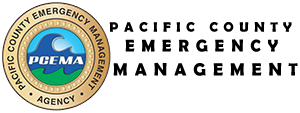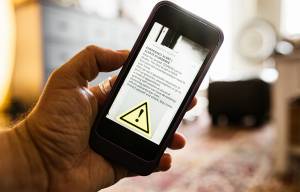Hazards
Pacific County Emergency Management Agency
Emergency Management Cycle
Emergency management primarily focuses on preparedness. Community preparedness for all disasters requires identifying resources and expertise in advance, and planning how these can be used in a disaster. However, preparedness is only one phase of emergency management. Current thinking defines four phases of emergency management: mitigation, preparedness, response, and recovery.

Mitigation
This phase includes any activities that prevent an emergency, reduce the likelihood of occurrence, or reduce the damaging effects of unavoidable hazards. Mitigation activities should be considered long before an emergency. For example, to mitigate fire in your home, follow safety standards in selecting building materials, wiring, and appliances. But, an accident involving fire could happen. To protect yourself and your animals from the costly burden of rebuilding after a fire, you should buy fire insurance. These actions reduce the danger and damaging effects of fire.
Preparedness
This phase includes developing plans for what to do, where to go, or who to call for help before an event occurs; actions that will improve your chances of successfully dealing with an emergency. For instance, posting emergency telephone numbers, holding disaster drills, and installing smoke detectors are all preparedness measures. Other examples include identifying where you would be able to shelter your animals in a disaster. You should also consider preparing a disaster kit with essential supplies for your family and animals.
Response
Your safety and well-being in an emergency depend on how prepared you are and on how you respond to a crisis. By being able to act responsibly and safely, you will be able to protect yourself, your family, others around you and your animals. Taking cover and holding tight in an earthquake, moving to the basement with your pets in a tornado, and safely leading horses away from a wildfire are examples of safe response. These actions can save lives.
Recovery
After an emergency and once the immediate danger is over, your continued safety and well-being will depend on your ability to cope with rearranging your life and environment. During the recovery period, you must take care of yourself and your animals to prevent stress-related illnesses and excessive financial burdens. During recovery, you should also consider things to do that would lessen (mitigate) the effects of future disasters.

